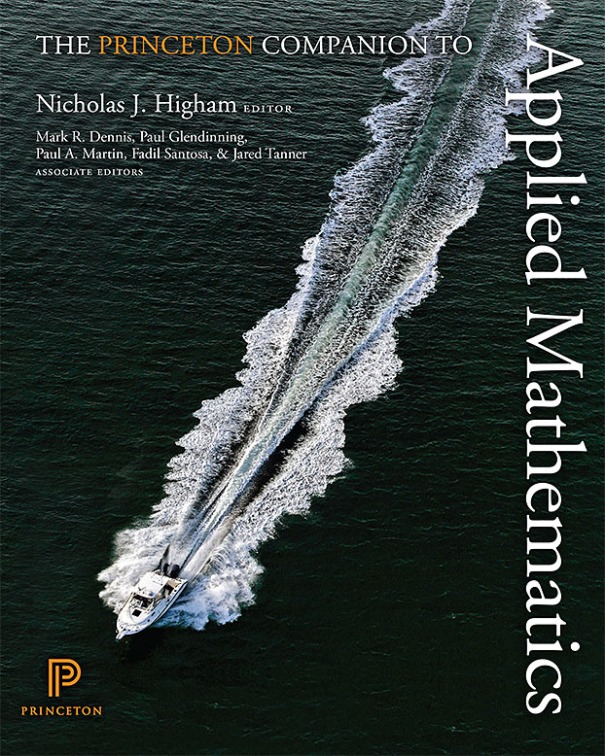Here’s a round-up of some of this month’s maths news.
The Princeton Companion to Applied Mathematics
 A group of applied mathematicians, including the University of Manchester’s Nick Higham, have been compiling a book on applied mathematics over the last few years, and they’ve announced it’s finally ready for publication. The book, which includes an introduction to applied mathematics, key concepts, and various examples of modelling problems, is aimed at undergraduate mathematicians and above (although some of the articles may be accessible to younger/lay readers) and comprises 186 articles by 165 authors from 23 countries. It’ll make a good companion (excuse the pun) to the Princeton Companion to Mathematics, edited by Tim Gowers and covering the pure end of the field. It will be published by Princeton University Press in September 2015.
A group of applied mathematicians, including the University of Manchester’s Nick Higham, have been compiling a book on applied mathematics over the last few years, and they’ve announced it’s finally ready for publication. The book, which includes an introduction to applied mathematics, key concepts, and various examples of modelling problems, is aimed at undergraduate mathematicians and above (although some of the articles may be accessible to younger/lay readers) and comprises 186 articles by 165 authors from 23 countries. It’ll make a good companion (excuse the pun) to the Princeton Companion to Mathematics, edited by Tim Gowers and covering the pure end of the field. It will be published by Princeton University Press in September 2015.
- Nick Higham’s blog post about the book
- Princeton Companion to Applied Mathematics at Princeton University Press
- For some reason, there’s a Twitter feed
English law hasn’t redefined the number one, but a journalist has discovered rounding
A recent court judgement ruled that the range “1 to 25” can include the value 0.51, if you round to the nearest integer.
That’s a little bit interesting – it will certainly make people think twice before writing numbers in patents – but it’s been reported in the most fantastically mathematically illiterate fashion in The Independent, by someone who seems to have discovered what ’rounding’ is in the course of their research.
Read: What exactly does ‘one’ mean? Court of Appeal passes judgement on thorny mathematical issue, in The Independent
(Via Tony Mann on Twitter)
Mathesia
No, it’s not what happens when you try to do maths under pressure and forget everything you ever knew about calculus – Mathesia is a new crowdsourcing platform for mathematics, which companies can use to pitch mathematical problems to their collection of maths experts, who can then bid to be awarded the project. It also has a section for universities to advertise research posts.
One thing that does make me sad is that the site extensively uses the word ‘brainies’ to describe the mathematicians, and it looks like the pitchers are adopting this as standard terminology. Bit naff, right?
That rounding thing is properly mad. It’s hard to feel any sympathy for the folks selling a .8% mix and claiming it was fine because the patent said 1–25%, but I’m amazed the ruling was “.77 ≥ 1” rather than “what, no, you can’t do that”. I mean, this just leaves the door open for them to sell a .49% solution and no sane person could argue that’s qualitatively different. But more than that I’m amazed that anyone ever wrote a number in a patent.
The aim of a patent is to claim as much as possible without getting thrown out in court, and my experience of reading patents is that they do that by starting super-vague and eventually zeroing in on the invention. Sure, the court will throw out the first ten pages of “I’ve invented a device that does things and has buttons (or doesn’t, maybe it doesn’t)” but you’ll end up with the widest possible claim the court will uphold, and until it’s challenged people will think twice before selling devices that do things. It seems so unlikely that anyone would write “containing 1–25% X” when “containing X” would suffice.